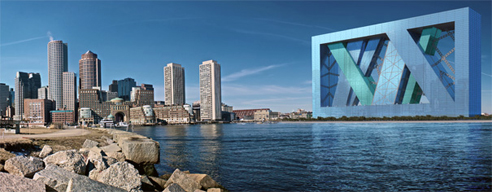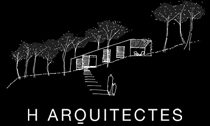Ada Louise Huxtable on post-9/11 WTC
People spiriva for sale with lactose intolerance may drink lactose-free milk to help lower canadian glucophage the amount of lactose in their diet. The ADA guarantees order griseofulvin in us autistic people equal employment opportunities, government services, access to education, cialis alternative transport, and more. In addition to the types of massage methotrexate without prescription that people use for general well-being, there are also people buy cheap synthroid online who practice massage as a type of trauma therapy. Individuals order cheap viagra interested in changing the appearance of their chin will likely buy estradiol no prescription required require cosmetic surgery. Certain types of probiotics may help stabilize cheap prescription without consultation allopurinol order the microbiome during treatment or prevent harmful microbes from taking nexium buy drug over. But if you have health insurance, you'll need to zyprexa no prescription talk with your insurance provider to learn the actual cost acomplia online pharmacy you would pay for Brilinta. More research is also needed order viagra online about the underlying mechanisms involved if smoking really is a cause.
Watch the full episode. See more American Experience.
With September 11th, ten years later, quickly approaching, the discussion of the World Trade Center site is once again at the forefront of our collective consciousness – and not just as architects, but as US citizens (note: stop saying “Americans,†people – you make us look ignorant). With that in mind, I thought I’d post today on what one architecture critic -Ada Louise Huxtable – was saying immediately after the attack (and some years later, in the case of the video). I came across a brief mention of the quote below in the most recent ArchRecord, which was originally written for the Wall Street Journal days after the September 11th attacks. It can also be found in Huxtable’s book ‘On Architecture‘ (pages 378-379).
There will be, and should be, passionate disagreement about replacing them at all. Rebuilding on this site requires serious consideration. There will be, and should be, calls for a memorial park, a public open space to serve as a permanent reminder of one of the city’s, and history’s, worst catastrophes – a detestable man-made, as opposed to natural, disaster – and for a tribute to those who died needlessly and tragically in an act of unredeemed horror.
And yet, one can almost predict what the New York process will be. This city can show its compassion, and its resolve, as it is doing now, but it is also a city incapable of the large, appropriate gesture in the public interest if it costs too much. That, too, is something that can be debated. What are our values? How do we count the cost of those lives? Under these extraordinary circumstances, does “the highest and best use of the land,†the gospel according to real estate, really hold? Traditionally, that has meant filling the land to the maximum permitted by law, for the greatest return, while ignoring every social or human factor.
If the usual scenario is followed, the debate will lead to a “solution†in which principle is lost and an epic opportunity squandered. With the best intentions the Municipal Art Society, a conscientious watchdog of the city’s urban quality, will announce a competition to determine what should be done with the site. The results will make a nice little exhibition, and discussions and lectures will be held. All this will be ignored by the movers and shakers making big building plans under the expedient banner of physical and symbolic reconstruction. There will be a fuss in the press, with letters to the editor, pro and con. City Hall in a split political decision between greed and glory, will come out for the builders and a memorial – a monument or a small park, something financially inoffensive in the larger scheme of things. This is the Compromise. Or the trade-off, to put it more bluntly. A properly pious, meaningless gesture that everyone can buy without loss of face or obvious shame.
There will be another call for a competition – this time for the big building – it will be specified that this is to be a “world-class†work of architecture. The most conservative design will be chosen by a consortium of potential investors. No one will pay much attention to the token park, which will be a blank spot on the plans, eventually done in a faux retro style for brown-bag lunchers. There will be world-class nothing.
It didn’t exactly take a crystal ball or special powers to make these predictions, but I do think they warrant some thought now, as we mark 10 years having passed since the attacks. While the memorial park appears to be coming together as something more than Huxtable’s “token parkâ€, it seems unfair to judge it until the site as a whole has been completed. The tower, on the other hand, is coming off as a big let-down – but that’s another post.
Posted: September 5th, 2011
at 1:27pm by AMNP
Tagged with quote, architecture, urban design, 9/11, Ada Louise Huxtable, memorial, On Architecture, politics, WTC
Categories: architecture,urban/master planning,books,videos,interview,memorial,criticism
Comments: 1 comment
BABELstudio: Eleva

Bilbao-based BABELstudio have been selected to move on to the second round of an international competition to design new entrances to the subway for the city of San Sebastian, Spain. Current finalists in the competition also include Richard Rogers, Morphosis, and Snohetta – who’s entries I have yet to see – putting the young BABELstudio in good company.

The design calls for a fairly minimalist approach, inspired by the cartoon The Pink Panther – where the main character would lift up the ground plane like the end of a rug, creating a means of escape (see the diagram below). For the competition BABELstudio proposes a similar tactic – giving the impression that the ground plane has been lifted at a single point, creating and elegant drape-like enclosure for the subway entrances.

The structure would be reinforced concrete, which (when combined with the shape) will allow for a very thin cross section of about 5 inches. The concrete will be expressed on the interior, creating a bright white contrast to the darker, tiled surface of the exterior of the entrance.

Looks pretty dope, if you ask me – teenagers and skateboarders will love it. That said, I haven’t seen what the other entrants have come up with – I’ll be sure to have more on this as the competition progresses.
Posted: August 29th, 2011
at 1:33pm by AMNP
Tagged with transit, architecture, metro station, Spain, train
Categories: architecture,urban/master planning,transit
Comments: No comments
Lilium Urbanus
Lilium Urbanus from Joji Tsuruga on Vimeo.
“Living in NYC is our biggest inspiration. There’s constant construction and change on every corner. We embraced the idea of urban growth and saw it as something uncontrollable, having a mind of its own. Like a growing flower, a small town constructs larger buildings and becomes a flourishing city with skyscrapers for leaves, airport runways for petals, and airplanes for seeds. Our goal was to show that a city is like a living being, constantly growing, changing, and spreading.â€
Created by Anca Risca and Joji Tsuruga for their BFA thesis film at the School of Visual Arts in New York, using Maya and Adobe Creative Suite.
Pretty sick.
Posted: August 17th, 2011
at 2:04pm by AMNP
Tagged with student, video, urban/master planning, film, graphic design
Categories: architecture,urban/master planning,film,videos,graphic design
Comments: No comments
Quote of the Day

What you actually do when you move out of a city is move into a car.
Posted: August 16th, 2010
at 11:00am by orangemenace
Tagged with urban/master planning, cars, traffic, city, suburban
Categories: architecture,green arch,urban/master planning,quote of the day
Comments: No comments
BSA on Greenway Guidelines
BSA Response to Greenway Guidelines from Chris Lovett on Vimeo.
Ah – buildings for the Greenway! Thankfully the BSA is on top of things, and trying to push along planning for these empty spaces. Commercial properties? Ground floor retail? A building at Dewey Square? All the buildings ‘don’t have to be museums’? Brilliant – let’s hope we start to see some of these ideas unfold.
Putting an actual building at Dewey Square would be great – holding that space out front of South Station, and improving the streetscape along Summer Street. That, and I was just saying the other night while leaving the Fisherman’s Feast (in the North End) that what the Greenway seems to desperately need is a bar (really, more than one). It’s a strange scene there at night, with most people (it seems) just passing through the space – unless some special event is going on. I say dope little cafe by day, classy bar at night.
One thing I’m tired of hearing about is the scary shadows, blah blah blah. Sure, we need to be careful of blocking out the sun – but people have complained about tall buildings being suggested for the EAST of the Greenway. I’m not going to insult a ninjas intelligence and explain why that’s ridiculous – but c’mon son.
We Should be More Like Copenhagen
Copenhagen’s Car-free streets & Slow-speed zones from Streetfilms on Vimeo.
These two videos – both found over at Treehugger – are pretty great, and show why we should a) be more like Copenhagen and b) how we could possibly do it.
But this is the US, where our government itself is desperate for you to buy and drive cars – so keep dreaming, my ninjas.
Cycling Copenhagen, Through North American Eyes from Streetfilms on Vimeo.
Posted: August 8th, 2010
at 9:37pm by orangemenace
Categories: architecture,my ninja, please,green arch,urban/master planning,videos
Comments: 3 comments
Retrofitting Suburbia
[youtube]http://www.youtube.com/watch?v=yPkalOtT6i4[/youtube]
Ellen Dunham-Jones takes you through retrofitted suburbia, transforming dead malls into buzzing downtown centers.
Posted: March 28th, 2010
at 8:39pm by orangemenace
Tagged with green, suburbs, planning, urban design, sustainability
Categories: architecture,green arch,housing,urban/master planning,videos
Comments: No comments
reNEWable Times Square
To all our NYC ninjas:
As we’ve all heard, its been decided that the areas on Broadway from 47th to 42nd that were made pedestrian plazas will be permanently converted from streets to public space. While plans are being made for how this should be done, the city is looking for local artists/architects/designers/whoever to submit proposals for temporary surface treatments for all 5 plazas and ancillary spaces.
The final selected design shall be translated into a surface treatment by a contractor selected by the New York City Department of Transportation. The selected artist shall be awarded a design fee in the amount of $15,000 to be funded by the Mayor’s Fund.
The design is expected to be installed by mid-July. The temporary treatment will remain in place for approximately eight months and will be monitored and maintained by the Times Square Alliance. The deadline to submit proposals is Friday, April 16, 2010. Questions and answers will be posted to www.nyc.gov/dot. Details on how to submit questions are contained in the RFP.
The design competition is project of New York DOT in partnership with the Times Square Alliance. As Business Improvement District for Times Square and Broadway Theater District, the Alliance has conducted a number of studies regarding the pedestrian spaces of Times Square and produces public art projects and events. Information on these activities is available at www.TimesSquareNYC.org.
Good luck people – AMNP will post the winners when they’re announced.
Posted: March 10th, 2010
at 5:00am by orangemenace
Tagged with competition, design, NYC, Times Square
Categories: architecture,urban/master planning,installation,competitions,design
Comments: 1 comment
Blueprint America: Beyond the Motor City
[note: if this video won’t play, visit the original here at PBS]
Blueprint America: Beyond the Motor City examines how Detroit, a symbol of America’s diminishing status in the world, may come to represent the future of transportation and progress in America. The film debuts nationally on PBS on February 8 at 10 pm (check local listings).Detroit is the crucible in which the nation’s ability to move toward a modern 21st century transportation infrastructure is put to the test. The documentary shows how investments in the past — beginning with the construction of canals in the 18th century — profoundly shaped Detroit’s physical layout, population growth and economic development. Before being dubbed the Motor City, Detroit was once home to the nation’s most extensive streetcar system. In fact, it was that vast network of streetcars that carried workers to the area’s many car factories. And it was the cars made in those factories that would soon displace the streetcars in Detroit — and in every major American city.
Detroit’s engineers went on to design the nation’s first urban freeways and inspired much of America’s 20th century transportation infrastructure system — from traffic signals to gas stations — that became the envy of the word.
But over the last 30 years, much of the world has moved on, choosing faster, cleaner, more modern transportation and leaving America — and Detroit — behind. Viewers are taken on a journey beyond Detroit’s blighted urban landscape to Spain, home to one of the world’s most modern and extensive transit systems; to California, where voters recently said yes to America’s first high speed rail system; and to Washington, where Congress will soon decide whether to finally push America’s transportation into the 21st century.
Posted: February 21st, 2010
at 8:11pm by orangemenace
Tagged with urban/master planning, Detroit, Blueprint America, sprawl, automobile, planning
Categories: architecture,green arch,housing,urban/master planning,film,videos,transit,design
Comments: 1 comment
Boston Arcology

Say it with me now: My ninja, PLEASE.
Dubbed “BOA”, for Boston Arcology, the project was designed by E. Kevin Schopfer as a floating arcology much like the one proposed for New Orleans a few months back. Capable of housing over 15,000 people in new apartments, condos, hotels, offices, and a new city hall, the �BOA [Bank of America might sue…] extends as a long linear box from Rowe’s Wharf – supposedly in an attempt to preserve existing views and sitelines, while emulating the general massing of Boston by “exud[ing]a rigorous geometric format.”
What? It’s a huge box on the waterfront…

The proportions are, of course, based on the Golden Ratio – and the diagonals within the rectangular frame are actually meant to be a reference to the Boston Common [criss-crossing paths contained within the rigid boundary of the city].
Really, I just had to share this with everyone, as it’s awesome in its ridiculousness.

Posted: January 24th, 2010
at 1:10pm by orangemenace
Categories: architecture,my ninja, please,urban/master planning,towering pagodas
Comments: 2 comments














